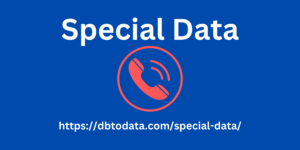|
|
There is not just one type of infographic but infinite types and possibilities. The differences live in the aesthetics and style of communication of the contents .The ideal Font for an ideal InfographicFirst of all, remember: when you want to create an infographic it is very important to choose the right font for the text to be written.Generally, News Times Roman is suitable for business-related topics, while Loobster is suitable for lighter and more creative content.It is advisable to use a maximum of three types of fonts for the same Infographic. One for the title , one for the headings and one for the notes . To get creative and explore various fonts to experiment with, you can take a look at Google Fonts .Infografica sui Social Media Tool by NetingInfographic example by NetingThe Title of your Speaking ImageExperience in online marketing teaches us that users prefer infographics with a title containing numbers in addition to the text. If you can, you could come up with a title like “The 10+1 reasons to build a website” . What do you say?Don't (just) go crazy , though!
Take advantage of the keywords you deem most appropriate for positioning Special Data the image in a fun, captivating way .So squeeze your creativity for valid titles that exemplify the quantity , percentages and data you will talk about. In this way the user is able to better grasp the ultimate meaning of the Infographic, perceiving that they are dealing with an interesting and useful multimedia object. Another example: “The 4 phases of Funnel Marketing”.Say no to excessesInfographics can be created with different aesthetic and color combinations but it is always best not to overdo it by trying who knows what aesthetic persuasion. Adopting a minimalist and clear style , not too whimsical, is equally of great visual impact and elegant at the same time.The color chosen for the background of the infographic should never inhibit the understanding of the content. If possible, the shade must be the same as the one used on the reference website, or a variant that recalls the color of the logo on the same Infographic. All this to convey coherence also on a chromatic level. Remember: color communicates too!The sources and the logo: the elements that establish the authority of an infographicThe use of false , presumed or unconfirmed information that does not come from authoritative sources should be avoided . Yes, this is also true when it comes to generating "banal" infographics, which summarize a company philosophy or the modus operandi of a work activity.In these cases, to appear more authoritative, it is recommended to include some examples of the work carried out .

Briefly explaining who a team worked for and with what motivation corresponds to an authoritative " corporate communication" capable of arousing interest and trust in potential customers.If they are authoritative and present correct citation of sources , infographics are not only shared on social networks . In fact, they act as an excellent tool for obtaining referral traffic , i.e. traffic coming from incoming links , because they are very popular for link building.Attention: a detail not to be underestimated when you want to report other people's infographics is to always report the logo of the website from which it was taken or to which it refers. Resharing infographics without a logo runs the risk of appearing unreliable in the eyes of users, uncredible, even though the information reported may also be true.
|
|
